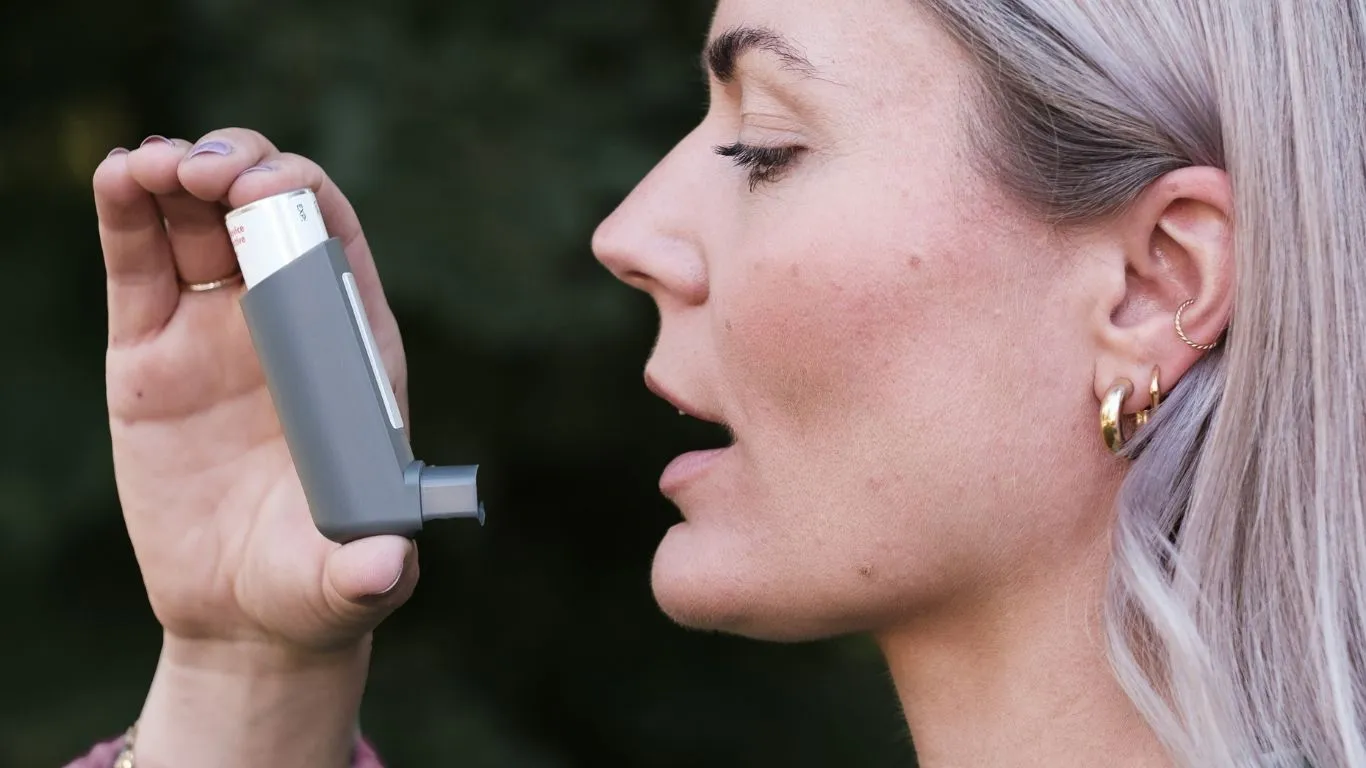How Weather Changes Trigger Asthma: Tips to Manage Symptoms
Can asthma be triggered by weather changes? Absolutely. As an asthma expert, I’ve seen firsthand how shifts in weather can set off asthma symptoms, sometimes even in the most controlled environments. If you or someone you know has asthma, you probably already understand that managing the condition involves more than just taking medication. In fact, environmental factors like weather can play a significant role in how well asthma symptoms are managed. From sudden temperature drops to high humidity levels, the weather can have a bigger impact than we might expect. So, let’s dive into how weather changes can trigger asthma, and what you can do to minimize the effects!
The Impact of Weather on Asthma: Why It Happens

Before we talk about the specifics, it’s important to understand why weather can affect asthma. Asthma is a chronic condition that causes the airways to become inflamed and narrow, leading to symptoms like wheezing, shortness of breath, coughing, and chest tightness. So, when the weather changes—whether it’s due to temperature, humidity, or pressure—your airways may react negatively. I’ve seen patients whose asthma symptoms flare up as soon as there’s a sudden cold snap or a humid day. It’s pretty common, but with the right knowledge and tools, it’s manageable.
Temperature Fluctuations: Cold Air vs. Hot Air

Cold air, in particular, can be a huge asthma trigger. It often feels like a sharp, icy breeze that tightens your chest, doesn’t it? That’s because cold air can cause the muscles around your airways to tighten, leading to more resistance in breathing. For many of my patients, just stepping outside into a cold environment or even moving from a heated house to the outdoors can cause discomfort. The change in temperature doesn’t give the airways a chance to adjust, resulting in an asthma attack. In fact, this is so common that I always recommend wearing a scarf over the nose and mouth when stepping out in cold weather—something as simple as that can help reduce symptoms.
On the flip side, hot air, especially during summer months, can also cause trouble. Hot, dry air can cause the lining of the airways to dry out and become inflamed, worsening asthma symptoms. People with asthma, especially those in areas with extreme heat, may find their symptoms spike as the mercury rises. Keeping cool with air conditioning can help, but if you’re in a location where this isn’t an option, it’s important to stay hydrated and take precautions when spending time outdoors.
Humidity: The Silent Asthma Trigger
If you’ve ever lived in a humid area, you know the feeling—sticky, heavy air that just doesn’t feel comfortable. For asthmatics, this humidity can feel even more suffocating. Humidity, particularly high levels of it, can cause the airways to swell and restrict airflow, making it harder to breathe. It also increases the likelihood of mold and dust mites, both of which are triggers for asthma. As someone who’s worked with many patients in high-humidity areas, I’ve seen the struggle when the weather shifts to this type of environment. It’s not just uncomfortable—it can be downright dangerous if not managed properly.
For those of us in these conditions, having an air purifier indoors and limiting time spent outdoors on excessively humid days is key. Also, try to stay cool and use a dehumidifier indoors if possible. These small steps can make a huge difference in managing asthma symptoms during high-humidity days.
Managing Asthma During Weather Changes
Now that we know the weather can play a role in asthma symptoms, the big question is: how can you manage asthma when the weather changes? While I can’t control the weather, I’ve helped many patients manage their asthma effectively despite the shifts. Here are a few tips I always recommend:
- Monitor the weather regularly – Keeping an eye on weather forecasts can help you prepare for upcoming temperature drops or spikes in humidity. Being proactive is key!
- Keep your inhaler with you – Don’t leave home without it. When I have a patient who experiences weather-triggered asthma, I always advise them to keep their rescue inhaler handy, especially on days with significant weather changes.
- Wear protective gear – As I mentioned earlier, scarves can help during cold weather. Similarly, wearing a mask or a bandana during high-pollen or humid days can keep those asthma triggers at bay.
- Stay indoors during extreme conditions – If possible, try to stay indoors when the weather becomes extreme. During hot and humid days, or when cold fronts hit, it’s best to limit outdoor exposure.
Conclusion: Be Prepared, Not Surprised
In conclusion, weather changes are a very real factor when it comes to asthma. But with the right knowledge and preparation, you can manage your asthma effectively and avoid unnecessary flare-ups. I’ve always found that the more informed my patients are about how weather affects their asthma, the more they’re able to handle it with confidence. So, the next time you feel a sudden chill or experience a hot, muggy day, remember—understanding your asthma triggers and staying ahead of the game is half the battle.
How to Prevent Asthma Attacks During Weather Changes

So, now that we’ve covered why and how the weather can affect asthma, the next step is prevention. As someone who works closely with patients, I’ve seen the impact of simple changes in routine that can make a world of difference. Managing asthma during weather changes isn’t as complicated as it may seem. With the right tools and strategies in place, you can protect yourself from those unwanted flare-ups.
Stay Ahead with Medication
First and foremost, make sure your asthma medications are up to date. Many of my patients find that during seasonal changes—whether it’s the cold front of winter or the humidity of summer—regular medication helps them stay ahead of the game. If your doctor has prescribed a daily maintenance inhaler or long-term control medications, keep up with the schedule even if you’re feeling fine. The idea is to maintain a steady level of medication in your system so that your airways remain open, no matter what the weather brings.
If you have a rescue inhaler, don’t wait until you’re in the middle of an asthma attack to use it. Keep it accessible, whether it’s in your bag, your pocket, or somewhere easy to grab in case you need it. I’ve seen many patients who’ve avoided a major flare-up just by using their rescue inhaler before symptoms could escalate.
Humidity Control: A Game-Changer

As I’ve mentioned, humidity can make life much more difficult for people with asthma. It can cause the airways to constrict, leading to that feeling of tightness in your chest. One thing I always recommend is investing in a dehumidifier, especially if you live in a region that’s prone to high humidity levels. A dehumidifier will help reduce the moisture in the air, keeping it at a more comfortable level for your lungs. In fact, many of my patients who struggle with humidity have found relief just by using a dehumidifier at night in their bedrooms.
Additionally, if you live in a high-pollen area (which tends to coincide with humid weather), try to limit outdoor exposure during peak pollen times—typically early mornings and late evenings. I always tell my patients to keep windows closed during these times to avoid bringing in allergens. It’s a small change, but it can make a huge difference in managing asthma symptoms.
What to Do When You Feel Symptoms Coming On
Even with all the precautions in place, sometimes asthma symptoms still sneak up on you. It happens to the best of us! But don’t worry, there are ways to handle it calmly and quickly. As an asthma expert, I can tell you that being proactive is your best bet when you feel symptoms coming on, especially during weather shifts.
Stop, Breathe, and Assess
If you start feeling tightness in your chest or shortness of breath during a weather change, don’t panic. I always tell my patients to first stop what they’re doing and take a moment to breathe deeply. It sounds simple, but slowing down your breathing can help prevent a full-blown asthma attack. Focus on slow, steady breaths—count to four as you inhale, hold for a second, and then exhale slowly. This method can sometimes keep things in check before symptoms worsen.
Use Your Inhaler Early
If you feel that something is off, don’t wait until it’s too late to use your rescue inhaler. In my experience, patients who use their inhaler at the first sign of an asthma attack often prevent it from becoming a serious issue. Timing is everything with asthma—so don’t hesitate to act early!
Positioning: A Simple Hack
Another thing I always recommend to my patients is to change their body position when asthma symptoms flare. Sometimes, simply sitting upright can help open up the airways. If you’re feeling tightness or wheezing, try sitting in a straight-backed chair and lean slightly forward. This position can help your lungs expand fully and make it easier to breathe. It’s one of those little tricks that can make a big difference in managing symptoms in the moment.
Know When to Seek Medical Help
While many asthma attacks can be managed at home with medication and simple breathing techniques, there are times when professional help is necessary. If you’ve used your inhaler and the symptoms don’t improve, or if you’re having difficulty speaking or breathing, it’s time to seek immediate medical attention. Your health is the most important thing, and sometimes asthma symptoms require a doctor’s intervention. Trust me, I’ve had patients who waited too long to get help and ended up in the ER—so don’t take any chances if your symptoms worsen.
Recognize the Signs of a Severe Attack
Severe asthma attacks are rare, but they do happen. It’s important to know the warning signs that an attack is escalating. Symptoms like rapid breathing, a blue tint to your lips or face, and confusion are all signs that you need to get medical help immediately. Don’t wait until you’re struggling to breathe—call for help right away if things are getting worse.
In Conclusion: Be Ready for Whatever the Weather Brings
So, can asthma be triggered by weather changes? Yes, absolutely. But that doesn’t mean you have to be at the mercy of the weather. By staying prepared, keeping track of your asthma triggers, and making small lifestyle adjustments, you can prevent many weather-related flare-ups. As someone who has helped countless individuals manage their asthma during seasonal changes, I can say with confidence that knowledge is power. Don’t let the weather control you—take charge and enjoy life, no matter what’s happening outside!
Case Studies & Real-Life Examples

Let’s bring it all to life with a few real-world examples. I’ve worked with many patients over the years who’ve faced different challenges when it comes to weather-related asthma triggers. Sharing these stories might give you a clearer picture of how to manage your own asthma symptoms, especially if you’re navigating similar environmental issues.
Case Study 1: Sarah’s Winter Struggles
Sarah, a patient of mine for years, always had a tough time with cold weather. As soon as the winter chill arrived, she’d find herself reaching for her inhaler more frequently. But here’s the thing—her asthma was well-controlled during the warmer months. After we had a discussion, we realized that her sudden exposure to cold air when walking from her heated home to her car was triggering her symptoms. It wasn’t even the outdoor air quality—it was the abrupt temperature change. By simply investing in a scarf and wearing a jacket that shielded her face, Sarah noticed a big improvement in her symptoms. She even started carrying a pocket-sized inhaler in her coat pocket just in case! It’s the little adjustments that made a world of difference for her.
Case Study 2: Mike and the Humidity Challenge
Mike lives in a coastal area where humidity levels can reach uncomfortable highs during the summer. He’s had asthma since childhood, but he never thought humidity could be such a huge issue until we really started talking about it. Mike wasn’t aware that the moisture in the air could cause his airways to become inflamed, making it harder for him to breathe, especially after a long day outdoors. After discussing some strategies, we found that running a dehumidifier inside and staying inside on especially muggy days gave him the relief he was looking for. His symptoms improved dramatically, and he felt much more in control when the humidity spiked. It was another reminder that managing asthma is about recognizing your unique triggers and taking action.
Key Takeaways: What You Need to Remember
As we wrap up this article, let’s quickly go over the key takeaways for managing asthma during weather changes. These tips have worked for many of my patients, and I believe they can work for you, too!
- Know your triggers: Whether it’s cold air, humidity, or temperature changes, understanding what causes your asthma to flare up is the first step in managing it. Keep track of how different weather conditions affect you.
- Be prepared: Always have your medication, especially your rescue inhaler, within reach. You never know when a sudden change in weather might hit, so staying prepared is crucial.
- Dress accordingly: When temperatures drop or rise, wearing the right clothing (like scarves or breathable fabrics) can help protect your lungs from environmental triggers.
- Stay indoors when necessary: If the weather is too extreme or you’re experiencing high pollen or humidity levels, stay indoors as much as possible.
- Use air quality tools: Dehumidifiers, air purifiers, and even wearing a mask during extreme conditions can help minimize exposure to asthma triggers.
FAQs
As always, I get a lot of questions from patients about managing asthma and weather-related triggers. Let me address a few of the most common questions I’ve received over the years:
1. Can sudden weather changes really cause an asthma attack?
Yes, sudden changes in temperature or humidity can irritate the airways and cause asthma symptoms to worsen. Cold, dry air is particularly known to cause bronchoconstriction (narrowing of the airways), while hot, humid air can make it harder to breathe by increasing airway inflammation.
2. Is it safe to exercise outdoors during extreme weather conditions?
If you have asthma, it’s best to avoid outdoor exercise during extreme weather—whether it’s cold, hot, or humid. However, if you must exercise, try to do so during times when the weather is milder, and always take your inhaler with you in case you need it. Listen to your body, and if you feel symptoms coming on, stop and take a break.
3. What can I do if I experience an asthma attack while outside in the cold or heat?
If you’re outside and feel your asthma symptoms coming on, the best thing to do is to find a sheltered area, use your rescue inhaler, and breathe slowly and deeply. Try to warm up the air before inhaling in cold conditions, or cool down the air if it’s too hot. Be prepared to seek medical help if your symptoms do not improve.
Bonus: Additional Resources or DIY Tips
Here are a few DIY tips and resources to help manage asthma during weather-related triggers:
- DIY Humidity Control: If you live in a humid area, create a natural humidity absorber by placing a bowl of activated charcoal or silica gel in the rooms where you spend most of your time. This helps to reduce excess moisture in the air.
- Check Air Quality: Use an air quality monitor in your home or download an app that gives you real-time information about outdoor air quality. This way, you’ll know when to stay indoors.
- Stay Educated: Visit trusted asthma organizations like the American Lung Association to stay up-to-date on asthma management tips and research.
Appendix: References, Disclaimer, and Call to Action
References: For further reading, check out these reliable resources:
Disclaimer: This article is intended to provide general information on asthma and its management during weather changes. It is not a substitute for professional medical advice. Always consult your healthcare provider for personalized guidance on asthma care and treatment.
Call to Action: Remember, taking charge of your asthma is empowering! With the right preparation and knowledge, you can reduce the impact of weather changes on your asthma. Stay informed, stay prepared, and never hesitate to consult your healthcare provider if you need help managing your condition. Together, we can make every season easier to breathe through!

Bianca Nala is a compassionate Nurse Practitioner with a strong background in primary and respiratory care. As a health writer for Healthusias.com, she combines her clinical expertise with a talent for clear, relatable storytelling to help readers better understand their health. Bianca focuses on topics like asthma, COPD, chronic cough, and overall lung health, aiming to simplify complex medical topics without losing accuracy. Whether she’s treating patients or writing articles, Bianca is driven by a single goal: making quality healthcare knowledge accessible to everyone.






